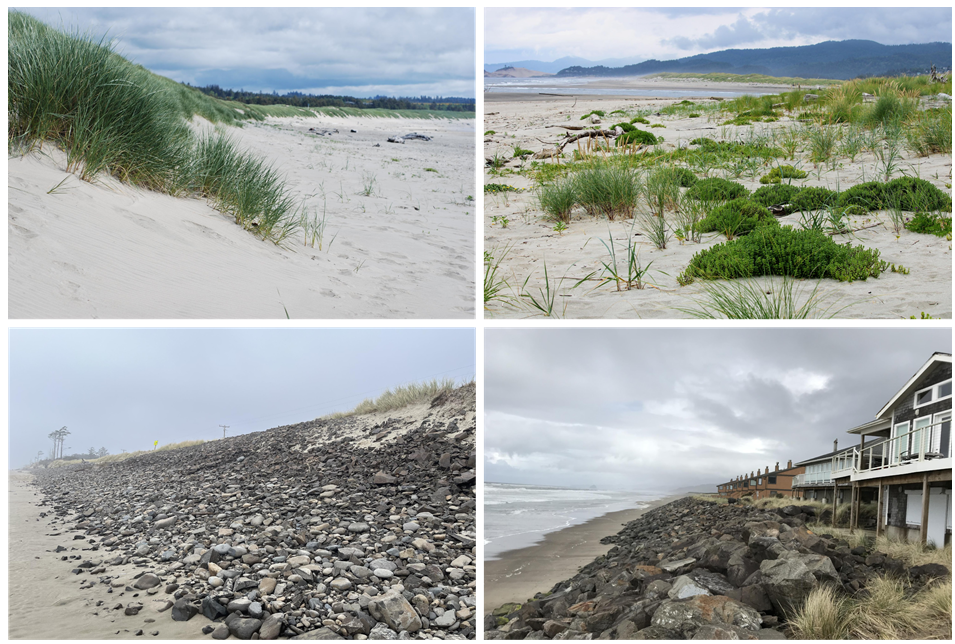We are assessing the environmental and economic tradeoffs of different nature-based solutions and traditional infrastructure for backshore dune environments in the Pacific Northwest. This will help communities identify land management options that maximize coastal protection and the ecosystem services they value.
Why We Care
In the Pacific Northwest, nature-based solutions (NBS), such as those provided by beaches and dunes, provide ecosystem services that help mitigate the effects of sea level rise and extreme storms. There is interest in managing backshore (the area landward of a beach that is submerged in extreme high tides or storms) land use to optimize coastal protection while considering other ecosystem services such as recreation, carbon sequestration, biodiversity conservation, and aesthetics. However, given the enormous variability along the Pacific Northwest coast, the ecosystem service tradeoffs of backshore environments are complex and multifaceted. Coastal managers need comprehensive assessments of the tradeoffs of different management options to make informed, effective decisions.

What We Are Doing
We are assessing the biophysical and economic values of a variety of backshore management options, including vegetated foredunes, habitat restoration areas, graded foredunes, dynamic cobble revetments, and shoreline armoring. Specifically, we will:
-
- Use multiple biophysical and economic valuation techniques (including erosion and flooding risk assessments, carbon storage measures, and housing market metrics) to estimate the ecosystem service values for a range of backshore management options.
- Apply a spatial land use optimization model to maximize the protective and other ecosystem service values for a range of backshore management options at specific locations in Clatsop and Tillamook counties, Oregon.
- Continue existing relationships with coastal managers, advisory boards, and community partners in Clatsop and Tillamook counties to co-develop climate resilient adaptation pathways that maximize the biophysical and economic values of a range of backshore management options.
Benefits of Our Work
This work will provide biophysical and economic valuations of multiple ecosystem services (protection, recreation, conservation, carbon storage, viewshed) for backshore management options. We will produce spatially explicit backshore optimization scenarios designed to maximize coastal protection and other ecosystem services under climate change at locations identified by coastal communities in Clatsop and Tillamook counties, with broad application to other regions.
This will be a useful tool for towns, state parks, and other public and private landowners to understand the conditions that maximize protection and other ecosystem services under different backshore management options. Project outputs will also support community efforts to produce updated beach and dune management plans. State and other agencies can use our evaluations to support and inform their applications to federal agencies for resilience project implementation funds.
This project is led by Dr. Sally Hacker at Oregon State University, in collaboration with Dr. Meagan Wengrove, Dr. Steven Dundas, and Dr. Peter Ruggiero at Oregon State University, and funded by the NCCOS Effects of Sea Level Rise (ESLR) Program.
